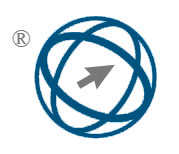CSO-MAVNE: A Multi-Agent GAN-GCN Based Collaborative Virtual Network Embedding Model for Dynamic Resource Allocation
Abstract
To solve the challenges of dynamic topology changes and multi-stage decision-making dependencies in virtual network embedding, a Collaborative Sequential Optimization Multi-Agent Virtual Network Embedding Model (CSO-MAVNE) is proposed. The model integrates three core mechanisms. The topological features of the underlying and virtual networks are extracted through graph convolutional networks. The virtual network topology graph is dynamically constructed and evaluated with the help of generative adversarial networks to optimize the embedding strategy. The distributed collaborative mapping of virtual nodes and links is realized by combining multi-agent reinforcement learning. The Internet Topology Zoo and Synthetic Topology datasets are used for experimental testing with DRL-VNE, MS-GCN, and D-GANE models. The experimental results show that when the number of requests is 300, the embedding success rate of CSO-MAVNE is 82.9%, the cost-benefit ratio is 4.5, the resource utilization rate is 92.5%, and the embedding time is 7.1 s. In the scenario of 10% link failure, the recovery rate remains above 91.7% and the embedding success rate reaches 86.5%. Under high load conditions, the request throughput is 267.9 times/second. The results show that this method is superior to traditional methods in terms of virtual network request embedding success rate, resource utilization rate, and dynamic environment adaptability, and provides a reliable solution for building an efficient and robust resource allocation mechanism.
Full Text:
PDFDOI: https://doi.org/10.31449/inf.v49i28.8552

This work is licensed under a Creative Commons Attribution 3.0 License.









